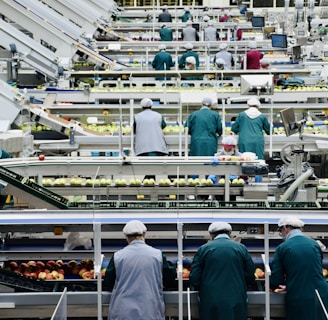Welcome to Deb's Dibbles of Interests


"Unavoidables" The Insect and Rodent Content in Our Groceries
A view of the FDA Handbook document of actual contaminants in the packaging of some foods. Insects, rodant remnants and their droppings, eggs and residues all have a level of allowance in our daily foods. These additional unwanted ingredients are considered unavoidables in the food industry. Awareness is exercising the fact that you know you have choices.


The Food Industry Standard...
The Food Supply Chain is Making Us Sick
"Unavoidables" Are Definitely in Our Packaged Foods
Insects, Rodents, Eggs, Droppings, Their Residues, and Mold Findings
The FDA has established findings and a handbook regarding the presence of unavoidable elements in our processed food industry. This handbook documents the acceptable amount of such elements that can be found in processed foods that we commonly bring to our families and table daily. Unavoidable elements include insects, rodents, fragments of their bodies, eggs, droppings, and other residues with molds that most definitely, inadvertently end up in packaged foods. The F. D. A guidelines aim to ensure that the presence of such elements will not pose a significant health risk to consumers. The industry standards to maintain the quality and safety of the food supply chain, safeguarding the well-being of the public is something we need to all to be aware of. The safety and quality is inspected by the product manufacturers, leading us to a very strong need to be our own final inspectors.




A Sample from the Handbook
Macaroni and Noodle Products
225 insect fragment, 4.5 Rodent hairs in 225 gram
Necturs, Apricots, Peaches, Pears
12% mold
Ground Pepper
472 insect fragments and 4 rodent hairs in 50 grams
Tomato-based Products
Purred 29% mold, Soup 45% mold, Powder 67% mold, Paste or sauce 30 fly eggs or more, 45% mold, 2 maggots per 100 grams, Juice 10 or more fly eggs, 2 maggots per 100 gram.
Food Defect Levels Handbook
open here
Scroll down past the glossary to find some of your favorite food's Food Defect Content
Metals, Plastics, Rubbers, Oils, Residuals
In addition to the FDA's guidelines regarding the presence of insects and rodents in packaged foods, there is also the need to consider the potential inclusion of glass, plastics, rubber molds, and dirt. These additional factors can unintentionally enter food products during the packaging process and pose potential risks to consumers. Therefore, it is important for food manufacturers to implement strict quality control measures to minimize the occurrence of such contaminants. Regular inspections and thorough cleaning procedures should be carried out to ensure that the final packaged foods are safe and free from any foreign substances. By adhering to these guidelines, food companies can maintain high standards of product safety and protect the health and well-being of their customers.


Be Carefull, Our Food Supply is Filthy
...wash molds, spors and residues with soap after a submerged soak. Peels when you can. Avoid over processed purchases like tomatoes based products and make them from whole tomatoes. Avoid foods packed in boxes without plastic wrap like boxed noodles. Avoid pre packed salads, wash unusual things like raisins, shake raw produce well before putting in cart, make your own sauces and spreads.
There are things we can do to gain even further protection to the foods we eat and not leave all of choices to the Food Industry.
I feel I am able to help myself by making wonderful tomato homemade sauces, pastes and dips. I eat a lot of peanut butter, and I used to make my own in my late teens early 20s, and will start again. I have started making my trail mix, washing and drying raisins, purchasing separate ingredients and mixing in a large bowl, placing it in new containers, allowing me to throw out the packaging with the dusty dirty salty partials usually abundant in the bottom. We can remove eggs from dirty, damp, cartons. Repackaging is easy, allowing for portions size packs for later convenience, freshness, and a conscious awareness not to binge. I have saved money and find the food quality last longer when repacked.
Small starts and efforts become habit forming, having me add a new step when I am inclined. I find it inspiring and pleasing to know I am taking a little more concern with the control of my foods.
I will grow more this year to avoid rodents running on and piercing my food with their tiny little claws or the others thing they do do. Less chance of molds and bacteria in any way is the perfect start.






Boxed Gardens Have Amazing Pick to Table Taste
Small Space
Big Rewards
By taking just a small amount of time and energy, we have the power to significantly enhance the quality and purity of the meals we consume. Engaging in actions such as washing our produce, unpacking and repackaging our groceries, creating homemade sauces and spreads, and even cultivating our own food not only promotes better health but also results in more delectable and secure dining experiences. These simple yet effective steps allow us to take control over what ends up on our tables, ensuring that we are nourishing our bodies with the best possible ingredients. Moreover, by actively participating in these practices, we can foster a deeper connection to the food we consume, appreciating the effort and care that goes into each meal. Therefore, it is clear that with minimal effort, we can make a significant positive impact on our food choices, bringing forth a multitude of benefits for our overall well-being.


